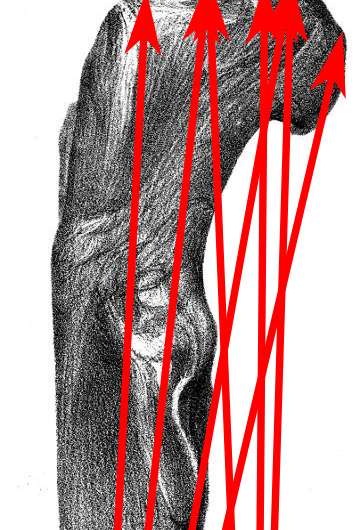Best practices for bone measurements

It's no secret to most of my colleagues that I'm a big fan of measurements in papers. Some of this stems from a graduate school education thoroughly steeped in quantitative methods and statistics. Some of it also derives from my nostalgia for the Golden Age of Paleontological Publications, where measurements were published for virtually every bone in the skeleton (at least in some cases). This is all balanced by frustration with papers that list important characters as mere ratios, talk about absolute size without presenting measurements, or only provide femur length and skull length in the description of a complete skeleton. Things are getting better, of course–many authors do provide a detailed set of comparative measurements, and supplemental information can be a handy place to put long tables of lengths and widths.
But, it isn't enough just to list measurements. Over the years, I've been thinking a lot on what measurements mean and how to make them of maximum utility. Measurements–like the ideal in any aspect of science–should be transparent and repeatable. In this post, I want to sum up some of my thoughts and present a brief set of best practice guidelines for taking and publishing measurements of specimens. If you have opinions or suggestions, leave a note in the comments!
Why Include Measurements?
Size is a basic feature of a specimen. Any description should have them, if we are truly serious about documenting past life.
Size is an important biological feature that ties in to just about every facet of an organisms existence–metabolism, functional morphology, growth, and phylogenetic relationships. If we ignore measurements, we are leaving critical data behind.
Measurements provide an archival record of a fossil at a particular point in time. In the unhappy event of a specimen's damage or destruction, published measurements provide critical documentation.
Other researchers can use your measurements to compare fossils and address issues of growth, allometry, and evolutionary relationships. Even if you are not using a measurement at the moment, someone else might in the future.
Best Practices for Publishing Bone Measurements
- Indicate the type of measuring device used. Were digital calipers used? Dial calipers? Optical reticle? Was the measurement taken from a CT scan (and if so, what data processing in terms of thresholds, etc., was used?) or other digital model? Did you use a cloth measuring tape? Was it measured from a photo?
- Indicate who took the measurements.
- For each measured specimen, indicate the repository, individual specimen number, and taxon.
- If the specimen has reconstructed or distorted areas, these should be noted.
- If measured from a cast, indicate this.
- For each measurement, include a text and pictorial description of measurement parameters. There is more than one way to measure femur length, depending on where you place the calipers or measuring tape (see image). A picture has the best potential for conveying information, particularly if accompanied by text specifying landmarks used to orient measurements. Accompanying text can help to remove any ambiguity that remains.
- If measurements follow a particular published standard, cite the relevant papers.
- Present all reasonable measurements. For example, if you have a complete manus or pes, the lengths of all individual elements (and widths!) should be included.
- When practical, all measurements should be included as a table in the main body of the text, not as supplemental information. This maximizes their visibility and the likelihood of long-term availability.
Provided by Public Library of Science
This story is republished courtesy of PLOS Blogs: blogs.plos.org.




















